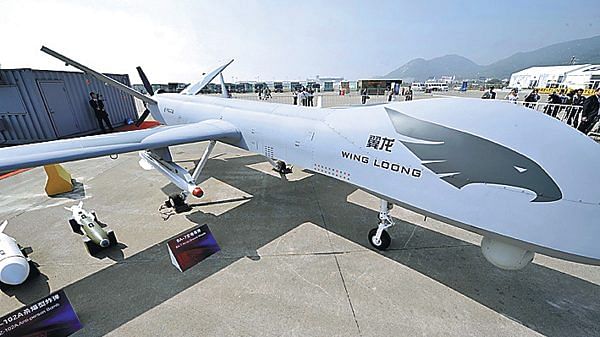mokoman
Senior Member
- Joined
- May 31, 2020
- Messages
- 6,237
- Likes
- 33,931
Good post man.I saw it on ancient aliens history tv
But found a clip here
Documentary film on Aliens: "MEN IN BLACK".

Good post man.I saw it on ancient aliens history tv
But found a clip here

They could have chosen another nameGood post man.
Documentary film on Aliens: "MEN IN BLACK".
Those are reversed engineered from American drone that had crashed in Iran.Sometimes i feel Iran is better in tech than India...India is just a hype...
Our requirements are of high standards which takes time to fulfill considering it's our first attempt.Sometimes i feel Iran is better in tech than India...India is just a hype...
| | � | |

| The Author is Former Director General of Information Systems and A Special Forces Veteran, Indian Army |




 theprint.in
theprint.in
Any photos? Article on this?L&T developing tactical UAVs for the Indian army,but IA would import from other countries.
Just google itAny photos? Article on this?
Any photos? Article on this?
Any photos? Article on this?

 www.defenceaviationpost.com
www.defenceaviationpost.com
Do they actually have working prototype or its all just on drawing board
L&T Developing Tactical UAV For Armed Forces - Defence News India
L&T intends to cater the needs of the Indian MoD and the Indian Armed Forces for UAVs and Targets through technological alliances with OEMs and through in-house development. We have successfully demonstrated our capability to manufacture UAV Airframeswww.defenceaviationpost.com
Don't know,they proposed offer just few months back,its still in early stages.Do they actually have working prototype or its all just on drawing board.
System Description:
2 Aerial Vehicles
Payload Suite
Gimballed Electro-optic/Infrared (EO/IR) camera
Synthetic Aperture Radar (SAR)
Electronic Warfare Support Measures (ESM)
1 Ground Control Station
1 Ground Data Terminal
2 Remote Video Terminals
Key Specifications:
Max take-off weight – 700 kg
Wingspan – 15 m
Max. payload – 140 kg
Max. endurance – 11 hours
Maximum speed – 60 m/s (115 knots)
Service ceiling – 7.6 km (25,000 feet)
This looks promising tho. Maybe IA may get interested later on.
L&T always delivers in time,you won't be disappointed from them,however maybe you'll get pissed when army imports UAVs.Do they actually have working prototype or its all just on drawing board.
System Description:
2 Aerial Vehicles
Payload Suite
Gimballed Electro-optic/Infrared (EO/IR) camera
Synthetic Aperture Radar (SAR)
Electronic Warfare Support Measures (ESM)
1 Ground Control Station
1 Ground Data Terminal
2 Remote Video Terminals
Key Specifications:
Max take-off weight – 700 kg
Wingspan – 15 m
Max. payload – 140 kg
Max. endurance – 11 hours
Maximum speed – 60 m/s (115 knots)
Service ceiling – 7.6 km (25,000 feet)
This looks promising tho. Maybe IA may get interested later on.
We need a huge drone force, I am not joking. 500 Medium UCAVS can turn the tide of war. Thats why I love Turkish Bayraktar UCAV. Just see what a few Bayraktars did in Armenia.We better catch up
A Bigger one in future should be made for Combat purposes, we should focus on UCAVs so that they can be used as a surveillance drone and armed drone at the same time. Thats why multirole aircrafts were made to carry out multiple operations in a single sortie.
Tata UAV system with VTOL capabilities....
| Thread starter | Similar threads | Forum | Replies | Date |
|---|---|---|---|---|
|
|
IAF HAWK 132 as Unmanned aerial combat vehicle | Indian Air Force | 0 | |
|
|
Cronshtadt Orion Lite MALE UAV/UCAV Platform | Military Aviation | 4 | |
|
|
India's Current & Future UAVs & UCAVs | Indian Air Force | 948 | |
|
|
Chinese UAV and UCAV News & Updates | China | 28 |
